If you've got a bike, you need a lock. Whether you are just wanting to deter…
The new Cannondale Scalpel has essentially been modernised to give it more travel, and more capable, more stable handling.
- Brand: Cannondale
- Product: Scalpel 1 Lefty
- Price: £8,550
- From: Cannondale
- Tested by: Hannah for a day
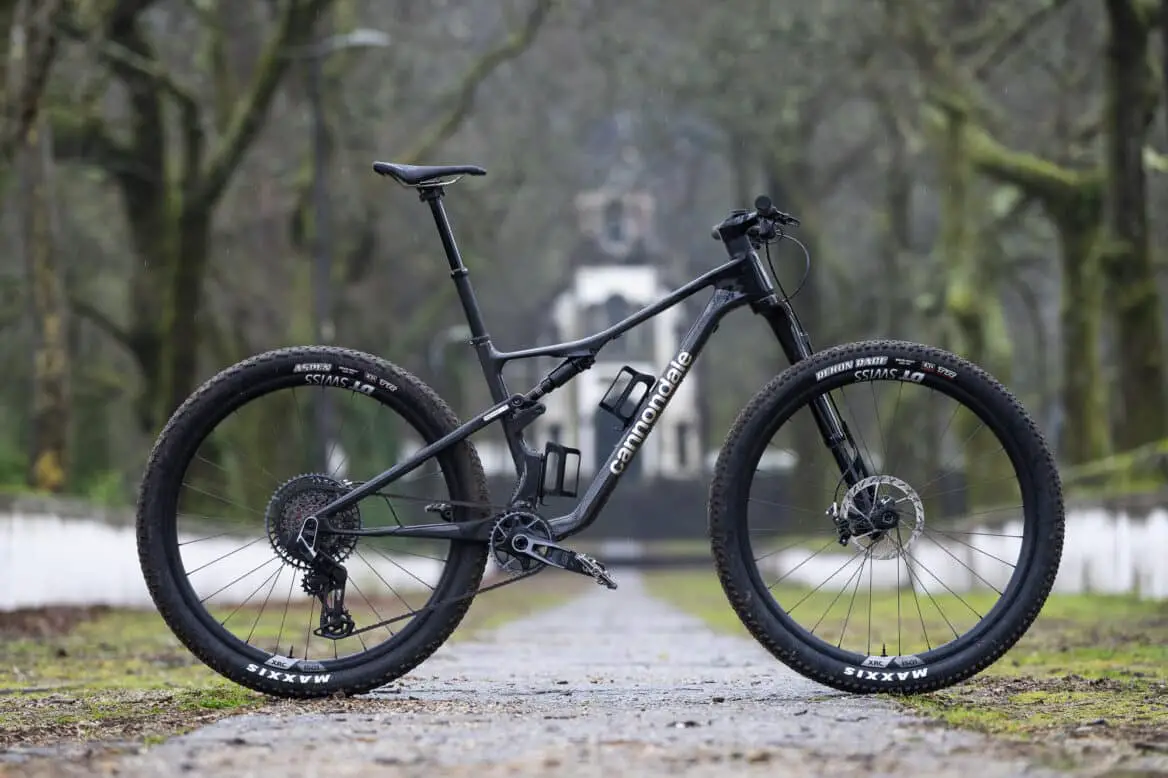
Pros
- Integrated bar and stem is actually comfortable
- Fast, fun and agile to ride
- Everyone will want to talk to you about the Lefty
Cons
- Mind boggling array of models
- Non integrated stem is ugly
- Tyres may need a swap for UK conditions
The new Scalpel
This is the eighth Scalpel, and the eighth iteration of the Lefty (hence, the Lefty Ocho). Cannondale’s perspective is that you win XC races on the climbs, capitalise on the flats, but you can lose on the descents, so the bike has been designed to be efficient to climb, but capable downhill. Cannondale has given it longer reach (10-25mm per size), shaved off a touch more weight, and slimmed down the carbon tubes yet retained stiffness.
The shock has been rotated upwards, which creates space for two water bottles on all bike sizes. Compared to the previous Scalpel, it’s about 20g lighter per frame, despite the frames getting longer.
The LAB71 build uses the Series 0 carbon fibre construction, while the other frames are Series 1. A Series 0 frame with paint and suspension hardware tips the scales at 1,778g, a Series 1 is about 200g heavier. Both Series 0 and 1 share the same stiffness.
Cannondale claims that every tube cross-section has been analysed to reduce the overall surface area and in turn shave off weight while retaining stiffness, particularly at the bottom bracket and headtube.
The slightly unusual shape in the seat tube is a product of making room for a 200mm dropper – although it comes equipped with a 150mm dropper in sizes M-XL. You no longer get the integrated tool storage – part of the process of keeping the stiffness in the tubing while lowering the weight. You also lose the Scalpel-specific rear wheel dishing of previous models.
The Scalpel and Scalpel SE division is no more, instead all Scalpel models level up, now having 120mm travel across the range.
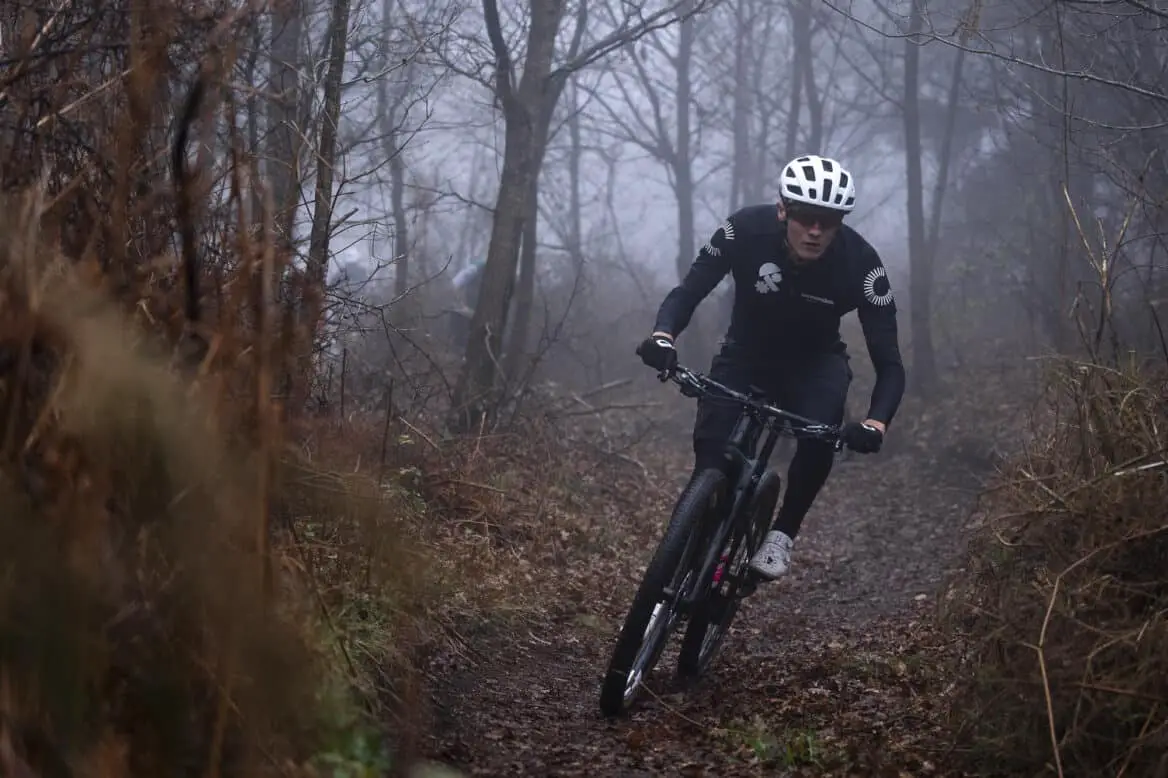
Geometry and suspension tweaks
The centre of gravity has moved a little forward and down from previous Scalpels in a bid for more stability as well as the suspension kinematics being now designed for 120mm travel. Chainstays have been lengthened slightly and are size-specific, which is especially noticeable to Cannondale’s resident giant and World Champion team rider Charlie Alridge, who says the XL bike is the first time he’s had a bike that truly fits him and allows him to run a short stem.
Cannondale’s data shows that most pedalling is done in the 30% (sag point) to 50% travel range, so they’ve tried to optimise the pedalling position and bottom bracket height for this, dropping the BB a touch. The seat angle has been steepened from 74.5° to 75.5. The head angle has slackened from 68° to 66.6°, and the head tube has been shortened a little to give XC riders that race position should they want it. The FlexPivot suspension remains, effectively making for a four-bar layout.
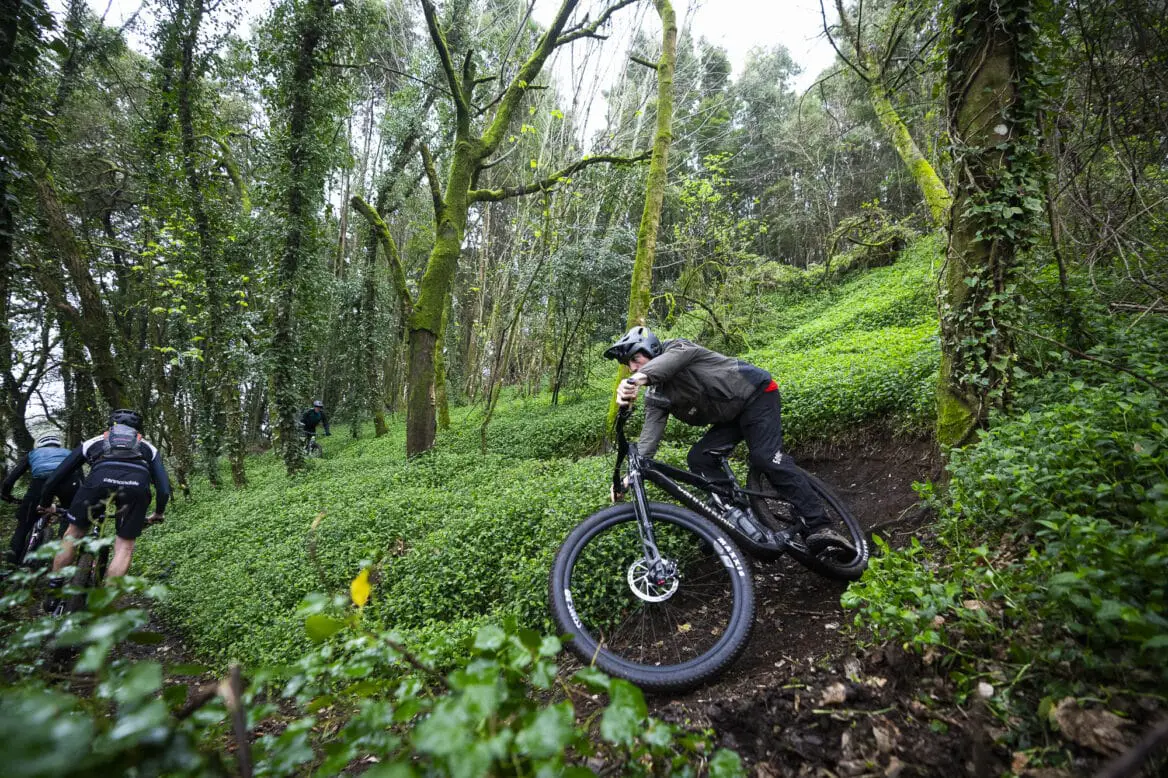
SKU-fest
Despite the elimination of the Scalpel SE, to me the Scalpel range still feels a tad confusing.
There are North American and European model ranges, five different price points in each range (Scalpels 1-4 plus the LAB71), and within the price points there are various build specs… There are models with and without the integrated bar and stem… In North America, you completely skip the Lefty – consumers want two stanchions. Within Europe and the UK, you get a selection of Lefty and 2-stanchion models with remote lockouts…
All these variables are apparently in response to consumer demands, and having had my own preconceptions challenged I wonder whether a rider education program might be in order to help narrow the number of models. Perhaps the customer is not always right.
The integrated bar and stem is partly a response to claimed consumer demands for a clean look, and partly down to the expectation that before long cable actuated shifting will be a rarity on premium race bikes.
If you don’t want the integrated version, there is a standard bar and stem model, but it’s hardly a thing of beauty. Mating up square and round shapes, it looks decidedly bodged. A stem only a mother could love. Or perhaps a mechanic. Cannondale has tried to make the integrated version more palatable to workshop dwellers (or, ‘Suck a lot less’, as we were told in the presentation) by including a cable funnel and clamp construction in the downtube to help guide cables through the frame and then hold them quietly in place.
They’ve also designed the headset to use the Acros bearing system which has a 1.5inch upper that is slightly thinner than the lower bearing. Cannondale says that this bearing is large enough to pass most XC brake levers through – removing the need for disconnection and bleeding during bearing replacement. They have worked with Acros to make he headset bearing last longer, with a better seal and secondary seal than is normally found in headset bearings.

Front ends
The integrated bar and stem comes in a 60mm (Small and Medium bikes) and 75mm (Large and XL bikes) length, with integrated 760mm wide bars, so the Medium model 1 that I tested came fitted with 60mm stem and integrated bars. Attached to that were 4 pot SRAM Level brakes.
All the bikes in the Scalpel range use 4 piston front and rear, on the basis that confidence is key on descents, and Cannondale thinks the tiny weight penalty is worth it to give racers the chance to relax and recover on descents rather than having to cling on in tension before switching back to in the red riding on the next climb.
The Scalpel is a race bike, and with U23 World Champion Charlie Aldridge on the team, Cannondale is not there to be an also-ran in the field. I have witnessed with my own eyes young Charlie being chased up a hill on a Scalpel – him sprinting, while a rider on a full powered ebike struggled to stay on his tail. He is fast, the bike is fast. But riders like him are not like most of us, and the bike is designed to be fun for us mortals too.

First Ride Review
Being a mortal – and conscious of recent injury recovery! – I had the specced Maxxis Rekon Race front tyre swapped out for a handily available Maxxis Minion DHR II. Keeping the rather exciting Maxxis Aspen on the rear, I headed out in very wet test conditions to see how much pain this bike would cause me.
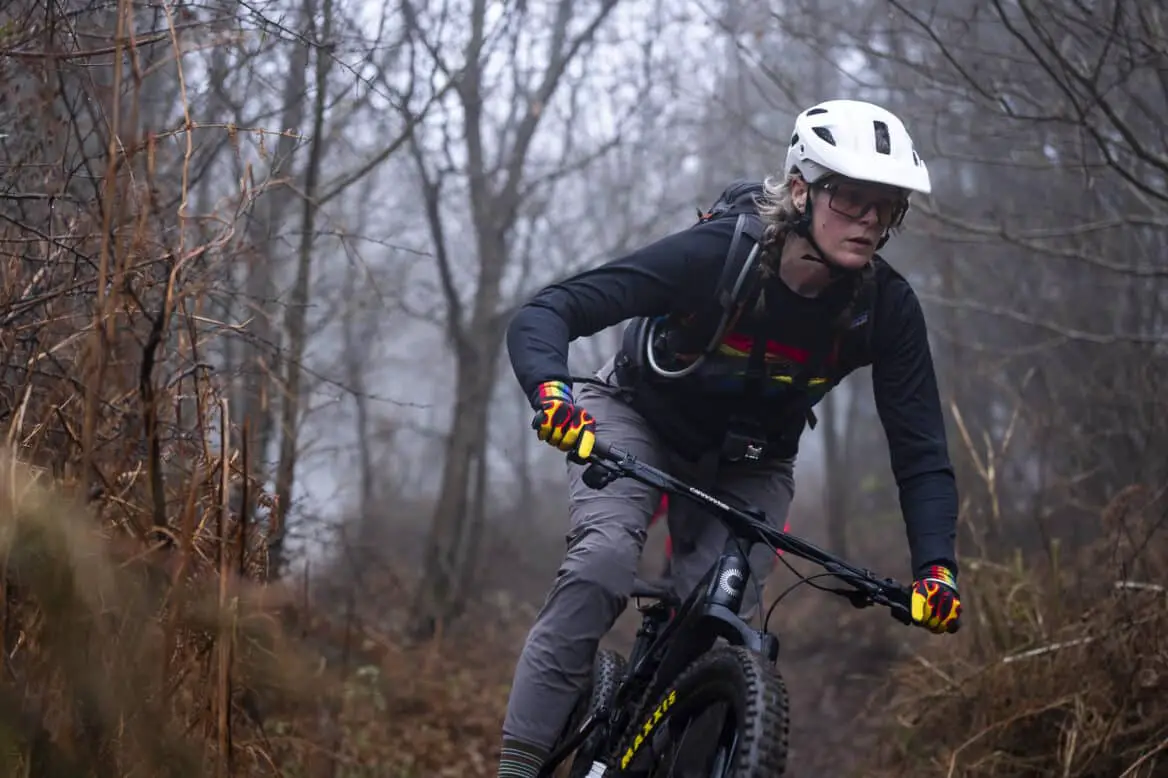
I’m not going to pretend I scampered up the nearest hill, but I did spin my up there eventually. The rear tyre made standing up a fairly tractionless exercise in the wet, but even with the 34T chainring I managed to pick my way up the climbs in a relatively comfortable state.]
No undue kissing of stems or shifting in the saddle was needed to keep the front wheel on the ground – steady spinning and some rhythmic gulping of air was enough to get to the top. Even the saddle was unusually kind. Race sharp this bike might be, but it wasn’t out to get me.
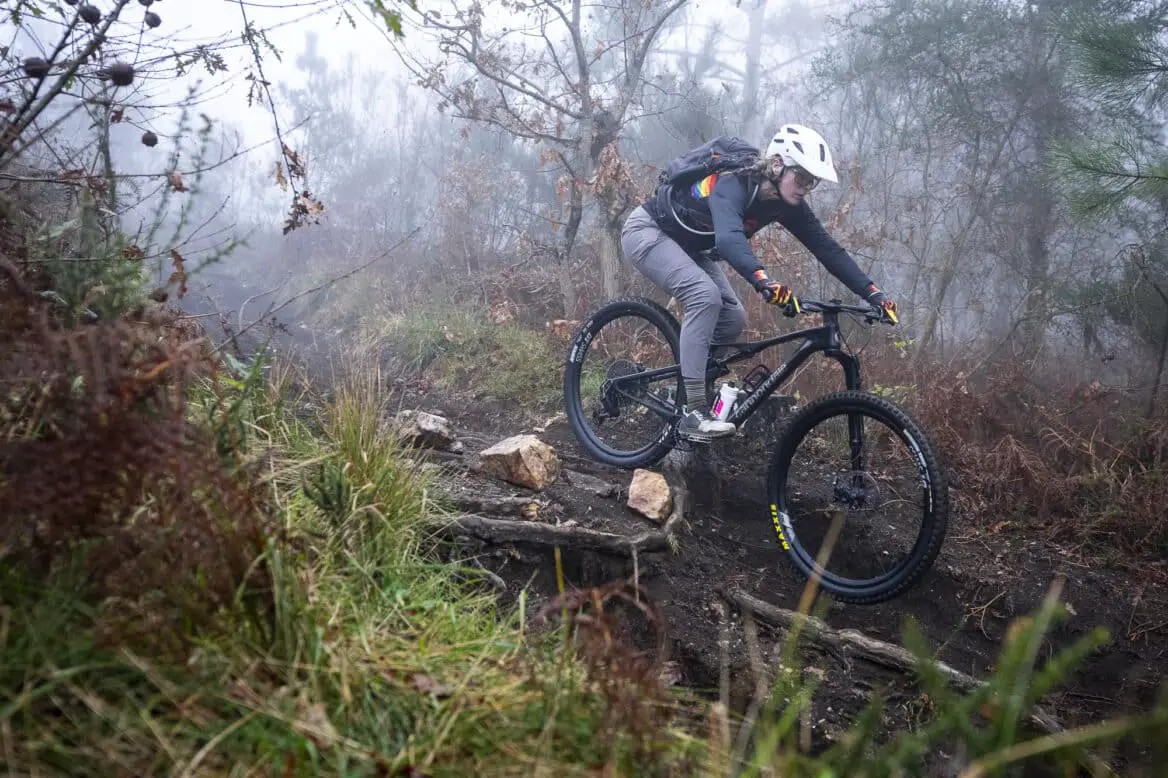
The two-position Fox Transfer dropper took me quite a bit of getting used to – it’s only up or down, with no infinite positions in between as I’m more used to. Catch it on your thigh on the return and you’ll have it sinking straight back down again rather than holding you on your perch. On especially undulating trails I found myself struggling to be seated when I wanted to be, and in turn struggling in be in the right gear – probably not assisted by the SRAM T-Type gear shifter pods, which I found a little alien and was still getting used to.
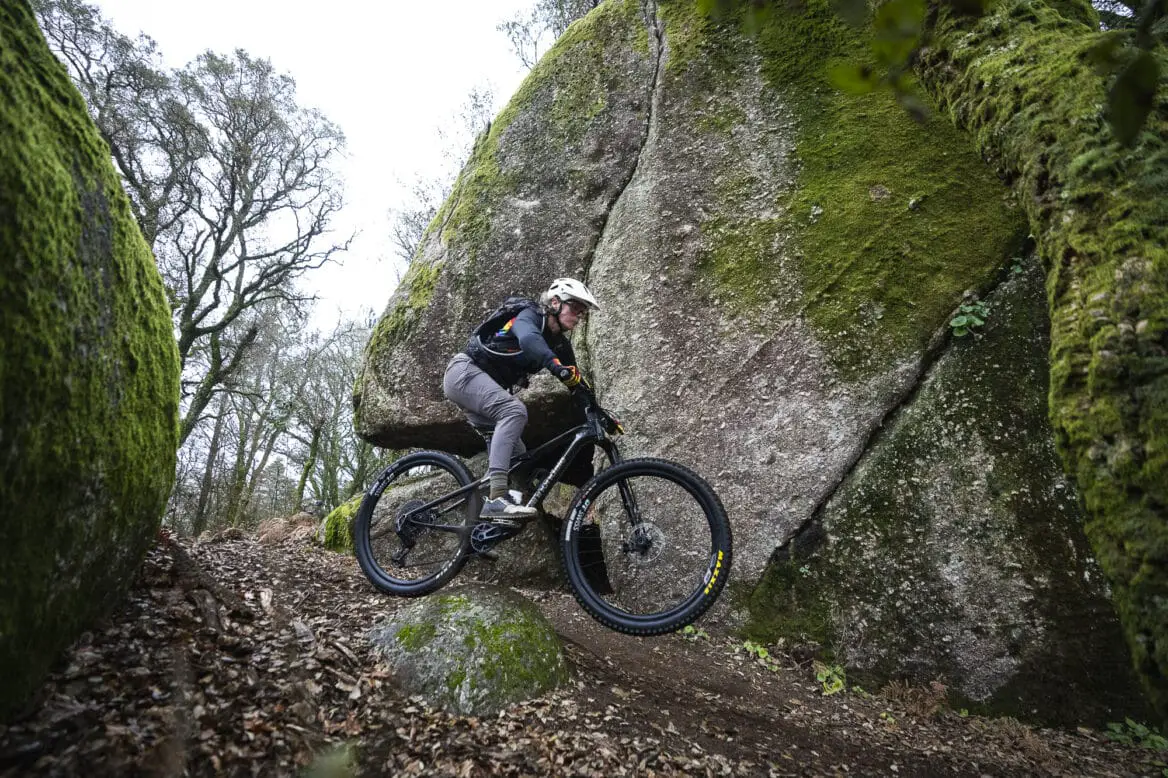
Descending was a joy. Precise steering, good brakes, and the lightness of the bike makes it fun to play with. Steep roller after steep roller, and even some decent drops, and my body felt positively fresh. Those bars were not the wrist smashers I expected, and I found myself actually comfortable on the bike. Apparently that neutral roll and sweep the bars have been designed around works for me.
The fairly narrow bars felt in proportion, not twitchy – in fact the only time I felt aware of them was on the second day of riding, when on a different bike with wider bars I clipped a tree that I’d easily avoided the day before. The only shock sent through my body was on bottoming out on a decent drop to flat, but even then it was momentary and I just kept on rolling.
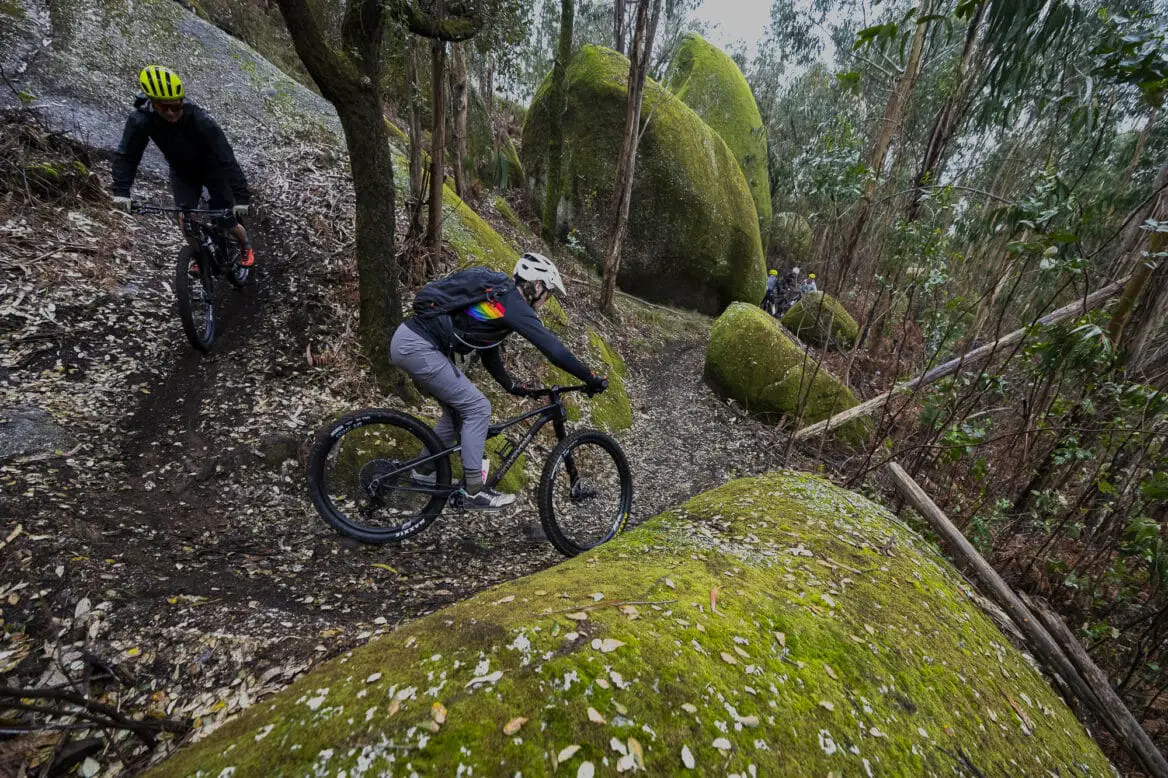
And roll I did, at speed (by my standards). When trails get too chattery, I can often find myself having to slow down. On the Scalpel, I found the ride staying smooth, my vision retained, and generally being given a speed workout as I flew down unfamiliar fire roads riddles with ruts, popping off rocks and hopping over obstacles at the last moment. On steep and twisty turns the bike rolls confidently where you tell it, not getting caught up on rocks or threatening to buck you off.
It’s pretty unusual for me to bottom out suspension with a bang, and if you’re a heavier rider you may find yourself heading towards the upper limits of the suspension capabilities, especially if you like a lot of airtime. Adding volume spacers may be the answer.
It’s a cross country bike – maybe ‘down country’ if you stick some bigger rubber front and rear like I did. But it’s not a trail bike for taking in jump lines and pushing into enduro. Think wheels-on-the-ground and occasional drops. Red trails rather than Black.
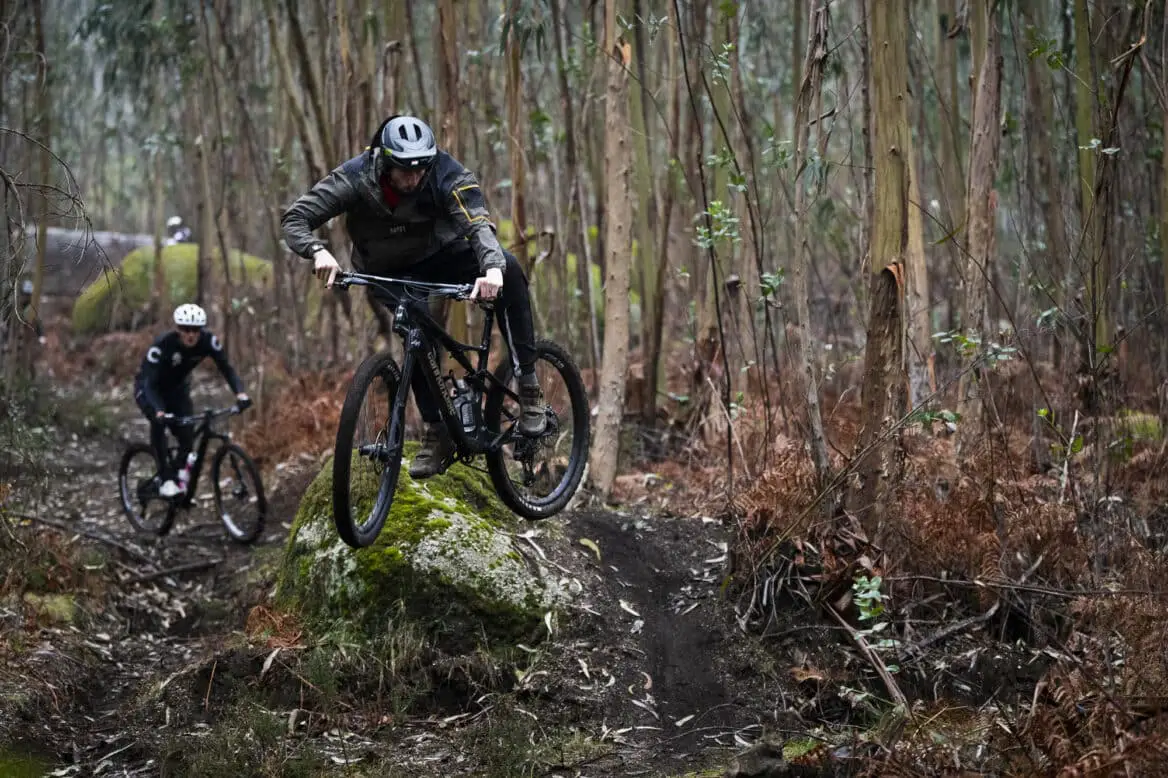
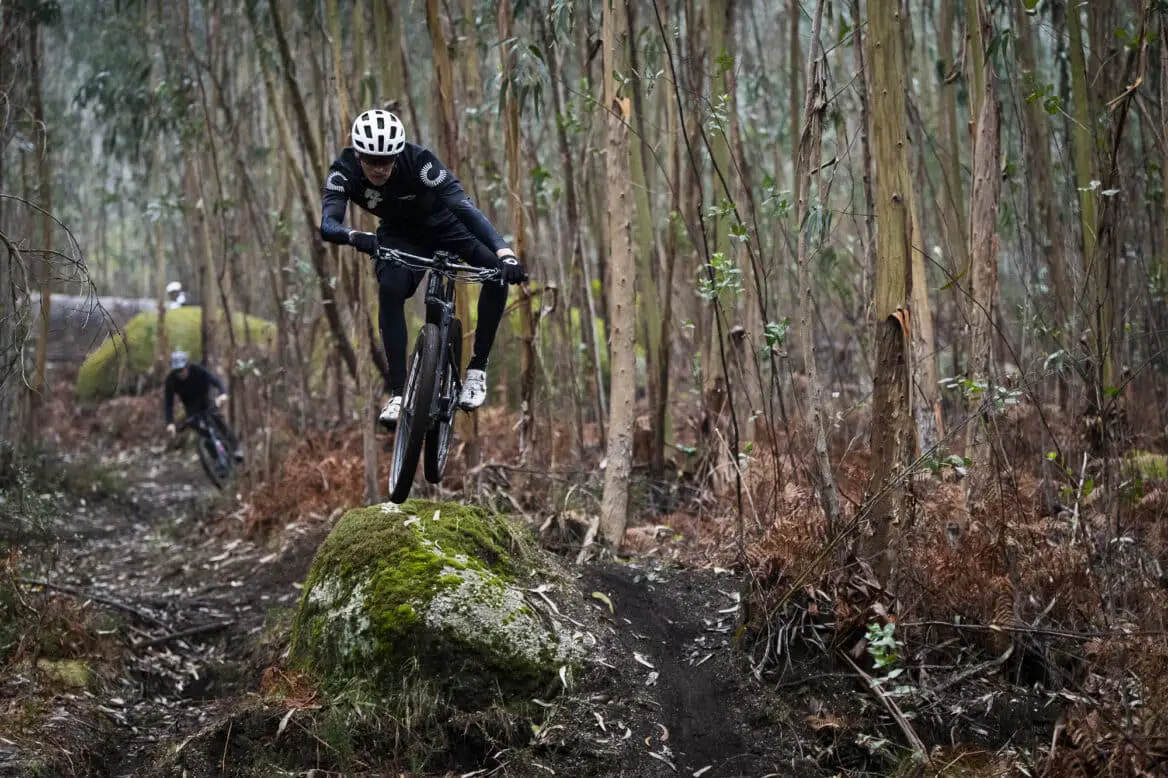
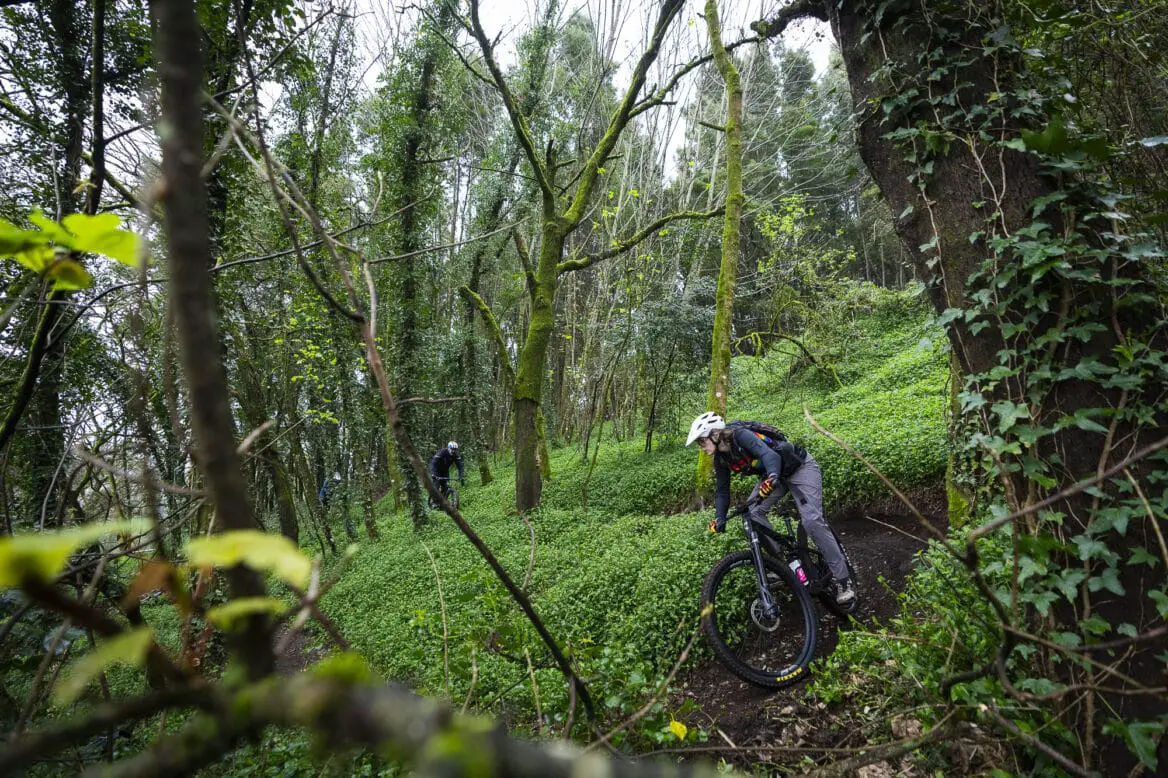
The lockout options on the forks are a thing Cannondale’s engineers again say is a result of consumer preference. They think if the design is right, the lockout is unnecessary. Personally, I’d be in favour of a less cluttered cockpit/free choice of grips, rather than the extra buttons or twist shifts that come with the lockouts.
It was my first time on a Lefty and I had expected it to mess with my head, or feel scarily twisty or flexy… but nope. I pretty much forgot it was there, didn’t feel the need for the lockout, and just got on with riding.
Cannondale says its needle-bearing-upper and sliding-bushing-lower reduces stiction and binding, while their damper allows you – via the low speed compression adjustment – to avoid brake dive. Certainly it all felt supportive and buttery smooth to me. Blasting down rutted fire roads and twisting down rocky trails, I never felt like the fork was doing anything other than keeping me rolling. Many times on a rock roller I thought to myself ‘it’ll be reet, it’ll go’, let off the brakes, and it did.
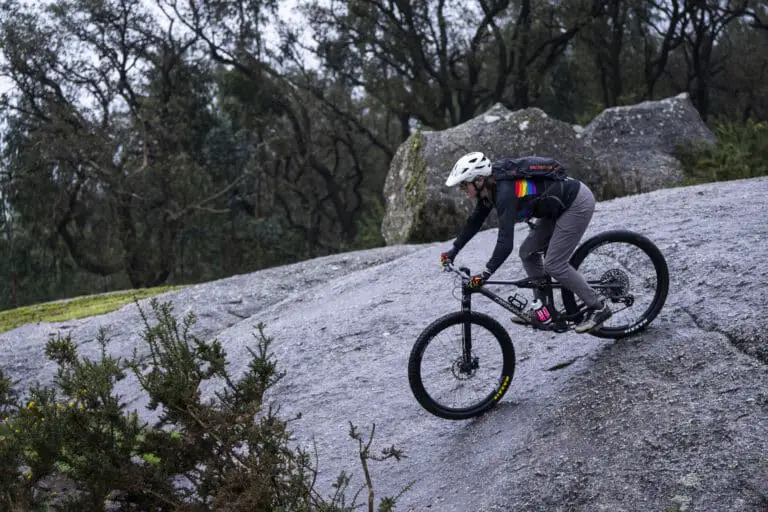
Overall
I’ll hold my hands up: I was fully prepared to hate every second spent aboard this bike. Coming off a year of various injuries and a flu-tastic winter, I was expecting this bike to hurt, both mentally and physically. Built to be fast, named after an instrument that certainly causes pain, I steeled myself for what would surely be a test ride of torture? I could not have been more wrong.
I’m not saying I’m ready to reach for disco slippers and start measuring my heart rate, but the Scalpel has certainly changed my ideas about how much fun an XC race bike can be. Yes, a good thrash in a sweaty mosh pit is fun, but the precision of lindy hop can also put a grin on your face. Have a shave, put on your smart shirt, and go dancing – the Scalpel totally upended my expectations.
Cannondale Scalpel 1 Lefty specification
- Frame // Series 1 Carbon, 120mm
- Shock // RockShox SidLuxe Select+, TwistLoc Ultimate, 190x45mm
- Fork // Lefty Ocho Carbon, 120mm
- Wheels // DT Swiss XCR 1501
- Front Tyre // Maxxis Rekon Race 29×2.4in
- Rear Tyre // Maxxis Aspen 29×2.4in
- Chainset // SRAM XO T-Type, 34T
- Brakes // SRAM Level Silver Stealth 4 Piston, 180/160mm
- Drivetrain // SRAM XO T-Type 10-52T
- Stem // SystemBar XC-One
- Handlebars // SystemBar XC-One
- Grips // RockShox Smooth Silicone
- Seat Post // Fox Transfer SL Performance Elite, 150mm
- Saddle // Prologo Dimension NDR
Geometry of our size M
- Head angle // 66.6°
- Effective seat angle // 75.5°
- Seat tube length // 400mm
- Head tube length // 90mm
- Chainstay // 438mm
- Wheelbase // 1,175mm
- Effective top tube // 597mm
- BB height // 42mm BB drop
- Reach // 450mm
More Reviews
Review Info
| Brand: | Cannondale |
| Product: | Scalpel 1 Lefty |
| From: | Cannondale |
| Price: | £8,550 |
| Tested: | by Hannah for A day |


You must be logged in to reply to this topic.